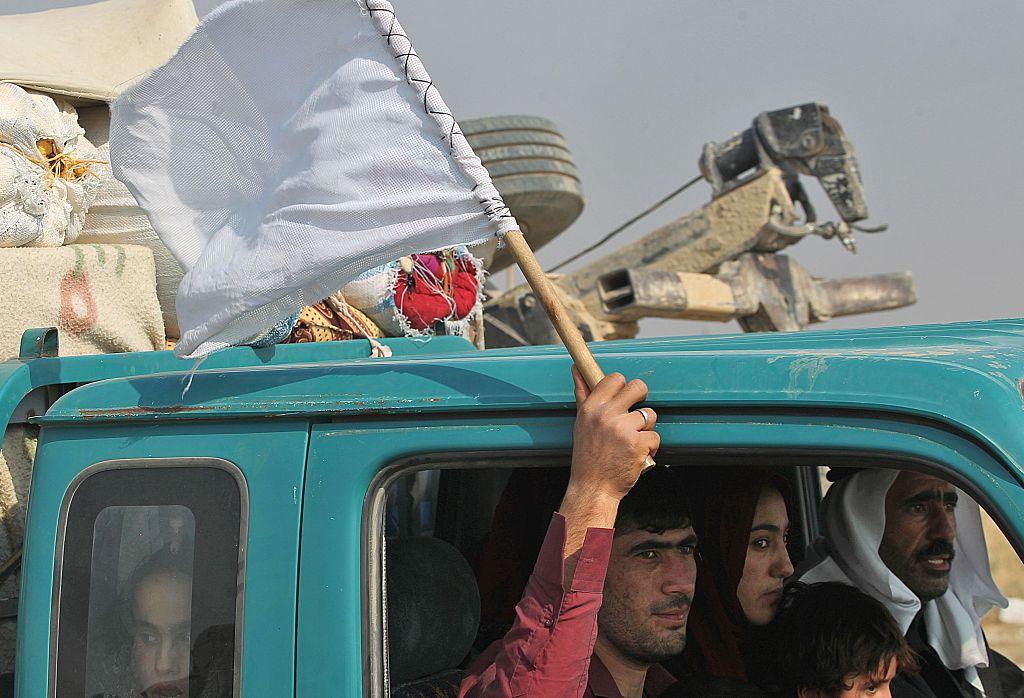‘They would torture them inside and slit their throats outside’: Eyewitnesses reveal full scale of Isis depravity as they flee Mosul
Bodies of 100 decapitated people discovered amid reports of Isis soldiers donning army fatigues to trick civilians, as US-backed coalition pushes further into heart of jihadis’ last stronghold in Iraq

Your support helps us to tell the story
From reproductive rights to climate change to Big Tech, The Independent is on the ground when the story is developing. Whether it's investigating the financials of Elon Musk's pro-Trump PAC or producing our latest documentary, 'The A Word', which shines a light on the American women fighting for reproductive rights, we know how important it is to parse out the facts from the messaging.
At such a critical moment in US history, we need reporters on the ground. Your donation allows us to keep sending journalists to speak to both sides of the story.
The Independent is trusted by Americans across the entire political spectrum. And unlike many other quality news outlets, we choose not to lock Americans out of our reporting and analysis with paywalls. We believe quality journalism should be available to everyone, paid for by those who can afford it.
Your support makes all the difference.“The devil himself would be astounded by [Isis’] methods of torture. It is beyond the imagination,” Ahmed, a former English teacher from a town south of Mosul said.
He recalled listening to the cries of agony coming from a detention centre – formerly an agricultural college – across the street from his home in Hammam al-Alil as Isis fighters dragged civilians outside to be executed in the middle of the night.
Horrific stories such as Ahmed’s have leaked out of Isis-controlled territory over the past two years. But in the face of the US-backed Iraqi coalition’s Operation Inherent Resolve – which is now pushing into the suburbs of the Isis stronghold of Mosul – the jihadis, desperate to retain control, have become more brutal, arbitrarily executing anyone suspected of trying to rebel, or even relatives of former police or security forces members.
As residents are freed, their first-hand accounts shed more light on the atrocities they have suffered since Isis captured a third of Iraq in a blitz across the country in the summer of 2014.
Late on Monday, the Iraqi military said it had discovered the decapitated corpses of at least 100 civilians at the newly recovered complex near Ahmed’s house.
Isis had used the town's agricultural college as “a killing field” for hundreds of people in the days before the Iraqi government advance, Ahmed said. At least six people in his street alone had been killed, he said, including his father and a family next door.
“They would torture them inside and then take them out of the neighbourhood and either shoot them or slit their throats,” he told Reuters.
Local security officials and the UN have reported scores more civilians in villages and towns around Mosul who tried to flee fighting were executed by gunfire and their bodies thrown in the Tigris River.
The military says its forces discovered the decapitated corpses of at least 100 civilians at the Hammam al-Alil complex. Hundreds more afraid of the violence hid in their homes with the curtains drawn for the last seven days, trying to make as little noise as possible to avoid detection, or being forcibly transported elsewhere by Isis to be used as human shields in more strategic locations.
Ahmed and his family were lucky that Iraqi troops arrived before they ran out of food or Isis found them.
More than 34,000 people are now estimated to have arrived at displacement camps, the International Organisation for Migration has said. Although aid organisations expect to be overwhelmed by between 200,000 to 700,000 people as fighting goes on, they are the lucky ones: thousands more people have been forced onto minibuses and trucks and taken deeper into Isis territory.
One source told the UN that a group of women and children who had not walked fast enough because one of their number was physically disabled had been shot at the roadside for delaying the rest of the convoy.
Isis has also reportedly been tricking civilians by wearing Iraqi army fatigues and pretending to be the liberating forces: when residents go out to greet them, Tariq, an engineering student from Hammam al-Alil said, they were shot.
“Even a one-year-old baby, they put a bullet in his head,” he said.
Approximately 1.5 million people are estimated to still be trapped in Mosul as the operation to drive Isis out of the city enters its fourth week.
The Iraqi army has repeatedly cautioned civilians to stay in their homes to avoid being caught in crossfire. But as the battle is expected to last weeks or even months, humanitarian agencies have repeatedly called on the security forces to set up promised safe corridors for civilians to be able to leave.
Join our commenting forum
Join thought-provoking conversations, follow other Independent readers and see their replies
Comments